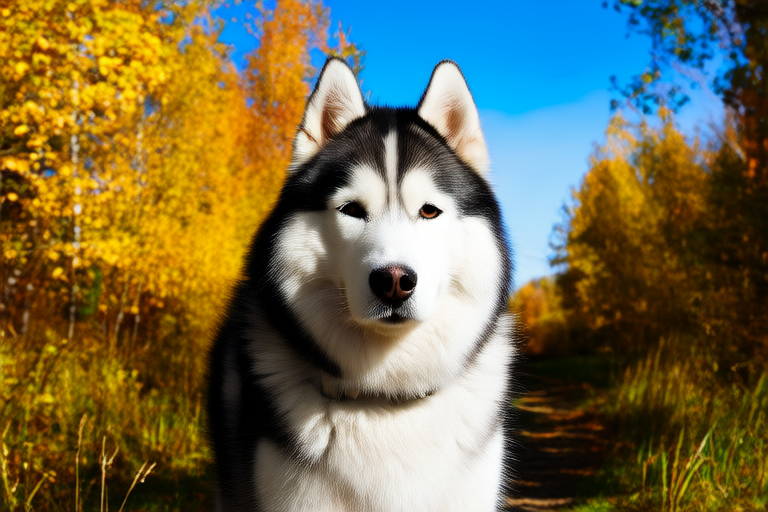
Top 10 Secrets Every Siberian Husky Owner Should Know
Siberian Huskies are one of the most beloved dog breeds, known for their striking blue or multi-colored eyes, thick coats, and energetic personalities. If you’re a new or experienced owner, understanding these dogs’ unique traits can significantly enhance your relationship with them. Here are ten secrets every Siberian Husky owner should know.
1. Exercise Needs: Tire Them Out Before They Tire You Out
Siberian Huskies are born runners, originally bred to pull sleds across long distances. They require a substantial amount of physical activity daily to stay healthy and happy. Without adequate exercise, they can become bored, leading to destructive behaviors like digging or chewing. Aim for at least two hours of vigorous exercise daily, including running, hiking, and playing fetch. This not only keeps them physically fit but also mentally stimulated, preventing unwanted behaviors.
2. Grooming Specifics: The Coat That Never Stops Growing
With their thick double coat, Siberian Huskies shed year-round, especially during spring and fall. Regular brushing is essential to remove loose hair and prevent matting. Use a slicker brush twice a week and more frequently during shedding seasons. Bathing should be done sparingly, as over-bathing can strip their coat of natural oils. Instead, focus on spot cleaning and regular brushing. Pay special attention to their paws, ears, and tail, which are prone to matting.
3. Dietary Recommendations: Fueling Their Active Lifestyles
Due to their high energy levels, Siberian Huskies need a diet rich in protein and fat. High-quality kibble specifically formulated for active breeds is ideal. Avoid foods with fillers like corn or soy, which can lead to obesity and other health issues. Always ensure fresh water is available, as Huskies are prone to dehydration. Consult your vet for personalized dietary advice based on your dog’s age, weight, and activity level.
4. Training Techniques: Patience is Key
Training a Siberian Husky requires patience and consistency. These dogs are intelligent but can be independent, making them challenging to train. Positive reinforcement methods work best; reward good behavior with treats and praise. Avoid harsh punishment, as it can lead to fear and aggression. Start training early and keep sessions short and fun. Focus on basic commands like sit, stay, come, and heel. Socialization from a young age helps them become well-behaved adults.
5. Socialization Benefits: A Friendly Husky is a Happy Husky
Siberian Huskies are generally friendly and outgoing, making them excellent companions. Early socialization with people, other animals, and different environments is crucial for their development. Expose them to various stimuli and situations, such as car rides, visits to the park, and meeting new friends. This helps build confidence and prevents shyness or aggression towards strangers. Socialized Huskies are more adaptable and easier to manage in public settings.
6. Behavioral Insights: Understanding Their Pack Mentality
Huskies are pack animals with a strong sense of hierarchy. They thrive when given clear leadership and consistent rules. Establish yourself as the alpha by setting boundaries and enforcing them consistently. Be firm but fair, and avoid giving mixed signals. Reward good behavior and ignore bad behavior unless it’s dangerous. Once they understand their place in the pack, they will be more obedient and cooperative.
7. Health Tips: Keeping Them Healthy and Happy
Despite their robust appearance, Siberian Huskies are prone to certain health issues. Common conditions include hip dysplasia, eye problems like cataracts and progressive retinal atrophy, and skin allergies. Regular veterinary check-ups, vaccinations, and preventive care are essential. Maintain a balanced diet, provide plenty of exercise, and monitor their health closely. Early detection and treatment of any issues can greatly improve their quality of life.
8. Unique Characteristics: The Eyes Have It
One of the most striking features of Siberian Huskies is their piercing blue or multi-colored eyes. While blue eyes are common, they can also have brown, amber, or even heterochromia (two different colored eyes). This breed’s eye color is determined by genetics and does not affect their vision. Their expressive eyes are just one part of what makes them so captivating.
9. Common Misconceptions: Separating Fact from Fiction
Many people believe that all Huskies are aggressive due to their wolf-like appearance. In reality, they are friendly and gentle, making great family pets. Another misconception is that they don’t need much exercise. As mentioned earlier, they are highly active and require significant physical activity daily. Lastly, some assume that Huskies are easy to train. While they are intelligent, their independent nature makes them challenging to train without proper guidance and patience.
10. Final Thoughts: Embrace Their Spirit
Owning a Siberian Husky is a rewarding experience, filled with love, loyalty, and adventure. By understanding their unique needs and characteristics, you can provide them with a fulfilling life. Remember to give them plenty of exercise, maintain their coat, feed them a nutritious diet, and train them patiently. With time and effort, you’ll develop a strong bond with your Husky, creating lasting memories together.






